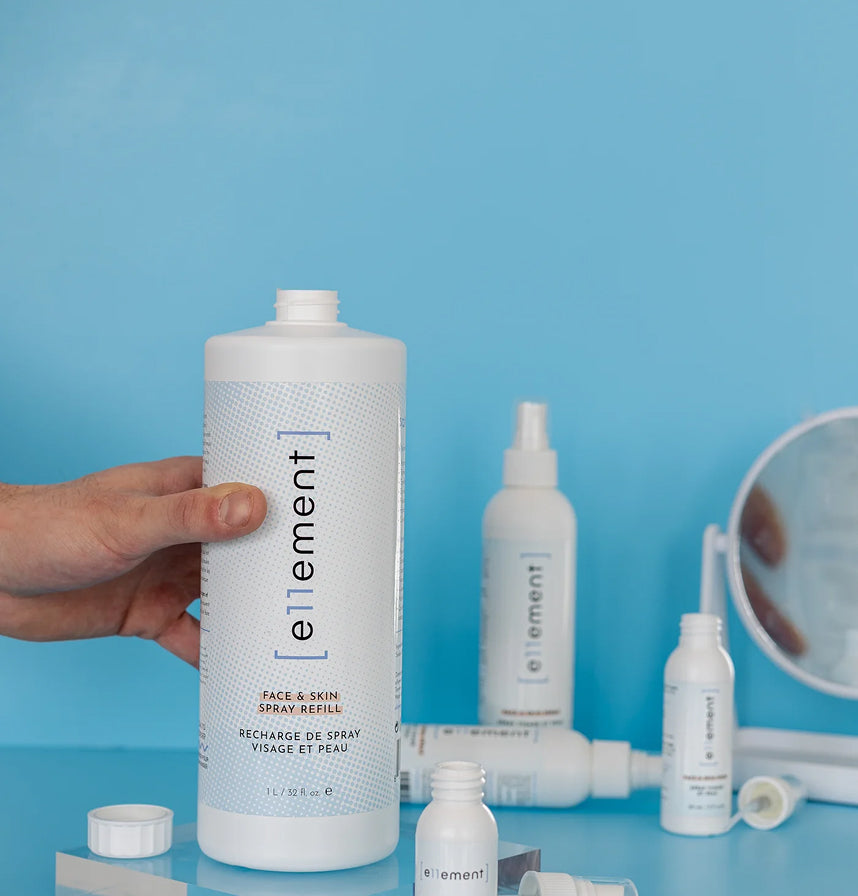Skincare has evolved significantly over the years, and new ingredients have made their way into everyday routines. One such ingredient is hypochlorous acid, a naturally occurring molecule in the human body. Known for its gentle yet effective properties, hypochlorous acid has been incorporated into skincare products, particularly acne sprays, to support skin health without irritation.
What Is Hypochlorous Acid?
Hypochlorous acid (HOCl) is produced by white blood cells as part of the body’s natural immune response. Its primary function is to fight off harmful bacteria and reduce inflammation. When used in skincare, hypochlorous acid is formulated to mimic this biological action in a stable, non-toxic form. It is water-based, non-irritating, and safe for daily use on all skin types.

Why Hypochlorous Acid Spray Is Used for Acne
Acne is typically caused by clogged pores, excess sebum production, and bacteria. Hypochlorous acid addresses these concerns by offering antimicrobial and anti-inflammatory benefits. It helps reduce the presence of acne-causing bacteria on the skin’s surface while calming redness and swelling.
Unlike many traditional acne treatments that contain alcohol or strong acids, hypochlorous acid spray is gentle enough to use without drying or damaging the skin barrier. This makes it an ideal option for sensitive or reactive skin.
Incorporating Hypochlorous Acid Spray into Your Skincare Routine
Step-by-Step Application
Understanding how hypochlorous acid acne spray fits in your skincare routine depends on your current regimen and skin type. Below is a basic framework for incorporating this product effectively:
Step 1: Cleansing
Start with a mild facial cleanser that suits your skin. This removes dirt, oil, and makeup from the surface, preparing the skin for treatment.
Step 2: Applying Hypochlorous Acid Spray
After cleansing, spray a light mist of hypochlorous acid directly onto your face. You can also spray it onto a cotton pad and gently pat it onto your skin. Allow it to air-dry naturally.
This step can be repeated twice daily—once in the morning and once at night—as part of your regular skincare routine.
Step 3: Serum or Treatment Products
Once the spray has dried, you may proceed with serums that target specific concerns, such as vitamin C for brightness or niacinamide for oil control.
Step 4: Moisturizer
Apply a hydrating, non-comedogenic moisturizer to seal in moisture and reinforce the skin barrier.
Step 5: Sunscreen (Morning Only)
Always finish your morning routine with a broad-spectrum SPF to protect your skin from UV damage.
Frequency of Use
Hypochlorous acid spray can be used daily. For individuals with active acne or inflamed skin, using it consistently can support a balanced complexion over time. It can also be used post-workout, after sun exposure, or anytime your skin needs a refresh.
Benefits of Adding Hypochlorous Acid Spray to Your Routine
Non-Irritating for Sensitive Skin
Many people with acne struggle to find treatments that don't aggravate their skin further. Hypochlorous acid is pH-balanced and non-sensitizing, making it suitable for individuals with eczema, rosacea, or other sensitivities.
Balances the Skin Microbiome
The skin microbiome plays an essential role in maintaining skin health. Disruption of this natural balance can lead to breakouts and inflammation. Hypochlorous acid supports the microbiome by targeting harmful bacteria while preserving the beneficial organisms.
Helps Manage Redness and Inflammation
One of the distinguishing features of hypochlorous acid is its ability to reduce redness and inflammation. This is especially helpful for individuals with cystic acne or inflamed pustules, where minimizing irritation is key to recovery.
Post-Procedure Friendly
Many dermatologists and aestheticians recommend hypochlorous acid spray following procedures such as microneedling, chemical peels, or laser treatments. Its antimicrobial and healing properties help soothe the skin and prevent infection without interfering with the healing process.
Choosing the Right Hypochlorous Acid Spray
Not all hypochlorous acid sprays are formulated the same. When selecting a product, consider the following:
-
Ingredients: Look for a product with minimal ingredients. It should contain hypochlorous acid, water, and stabilizers—but avoid those with added fragrance or alcohol.
-
Packaging: Opt for a spray bottle that preserves the stability of the solution. A dark or opaque bottle can help protect the formula from light exposure.
-
Concentration: Effective concentrations typically range between 0.01% and 0.02% hypochlorous acid. Higher concentrations are unnecessary for regular skincare use.
Who Should Use Hypochlorous Acid Spray?
Teens and Adults with Acne
This spray is safe for both teens and adults experiencing mild to moderate acne. It is especially useful for individuals who prefer a low-maintenance solution without harsh chemicals.
People with Reactive or Sensitive Skin
Because hypochlorous acid is non-irritating, it is a suitable alternative for those who cannot tolerate benzoyl peroxide or salicylic acid.
Individuals with Lifestyle-Related Skin Irritation
Those who experience breakouts due to wearing masks, frequent travel, or environmental pollutants may find hypochlorous acid spray helpful in maintaining skin clarity.
How Hypochlorous Acid Complements Other Skincare Ingredients
While hypochlorous acid is effective on its own, it also pairs well with a range of skincare ingredients. Here are a few combinations that work well:
-
With Hyaluronic Acid: For hydration and barrier support
-
With Niacinamide: For calming inflammation and regulating oil production
-
With Ceramides: For rebuilding the skin barrier
-
With Retinoids: As a gentle buffer when retinoids cause irritation
Because hypochlorous acid is non-reactive, it generally does not interfere with actives in your skincare routine, making it a versatile addition.
Conclusion
Understanding how hypochlorous acid acne spray fits in your skincare routine involves recognizing its multi-functional benefits. From fighting acne-causing bacteria to calming inflammation and supporting post-procedure recovery, this ingredient brings versatility and gentleness to your daily regimen.
It is suitable for nearly all skin types, integrates seamlessly with other products, and offers an uncomplicated approach to improving skin health. With consistent use, hypochlorous acid spray may help reduce breakouts and support clearer, healthier skin—without the drawbacks often associated with stronger acne treatments.
If you're building or refining your skincare routine, hypochlorous acid acne spray is a practical addition that supports both prevention and care.























